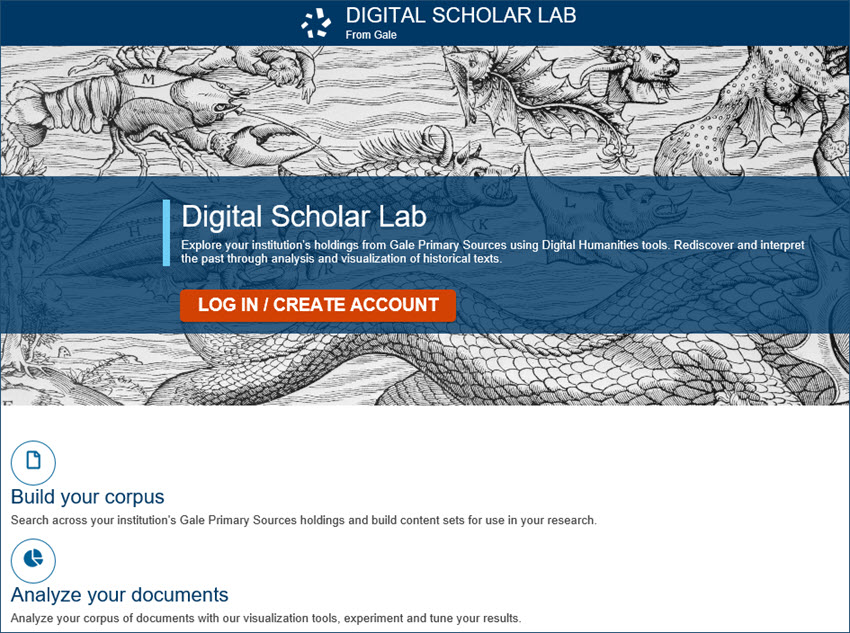New Resource: The Gale Digital Scholar Lab
Five campuses (Berkeley, Davis, Los Angeles, Riverside and San Diego) now have access to The Gale Digital Scholar Lab. The Gale Digital Scholar Lab is designed to transform the way researchers access and analyze Gale’s primary source content by integrating the depth and breadth of digital primary source content with the most popular digital humanities tools.
http://uclibs.org/PID/385585 B (+LBL), D, LA, R, SD; on the Gale platform
Create Visualizations and Run Computational Analyses in Your Web Browser
The Gale Digital Scholar Lab offers six analysis tools through which you can analyze Gale materials with just a few clicks:
- “Clustering” analyzes similar words across documents.
- “Named entity recognition” extracts proper and common nouns and groups them by types such as people, organizations, or dates.
- “Ngram” looks at the frequency of various terms or phrases.
- “Parts of speech tagger” considers how authors’ use of speech varies over time.
- “Sentiment analysis” tallies the positive or negative words in each document to produce a sentiment value.
- “Topic modeling” collects terms that frequently co-occur across a group of documents.
Download Plain-Text Files to Run Your Own Analyses
You can download up to 1,000 documents at a time as plain-text files for your personal use. You can run your own analyses on this data and combine it with other text sources to build custom text corpora.
What Content Is Available?
This resource permits users to extract and perform analysis on text contained in a subset of subscribed Gale databases. A full list of primary source digital archives is available at https://web.archive.org/web/20230326213954/https://www.gale.com/primary-sources/digital-scholar-lab. Due to local subscriptions and Tier 2’s, available corpus content may vary from campus to campus.
Additional Features
- View scans of original documents side-by-side with OCR plain text
- Work iteratively with your content set to refine your results
- Easily clean your data right in the Gale Digital Scholar Lab interface and create custom text-cleaning templates
- Work with materials and tools in other languages
How to Get Started
1. Visit the Gale Digital Scholar Lab.
2. Log in with your Google or Microsoft OneDrive credentials (a personal account is needed so you can create and save personalized datasets).
3. Create your dataset by searching through the materials in the Lab.
4. Run analyses on your dataset right in the web browser and get immediate results, or download your dataset to your computer to run your own scripts.
Instructional Materials
Please see Gale’s information page for more information and demo videos: https://web.archive.org/web/20230326213954/https://www.gale.com/primary-sources/digital-scholar-lab
Stacy Reardon (sreardon@berkeley.edu) is the Resource Liaison for Gale’s Digital Scholar Lab.

